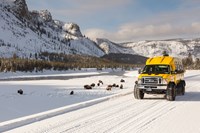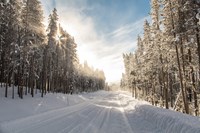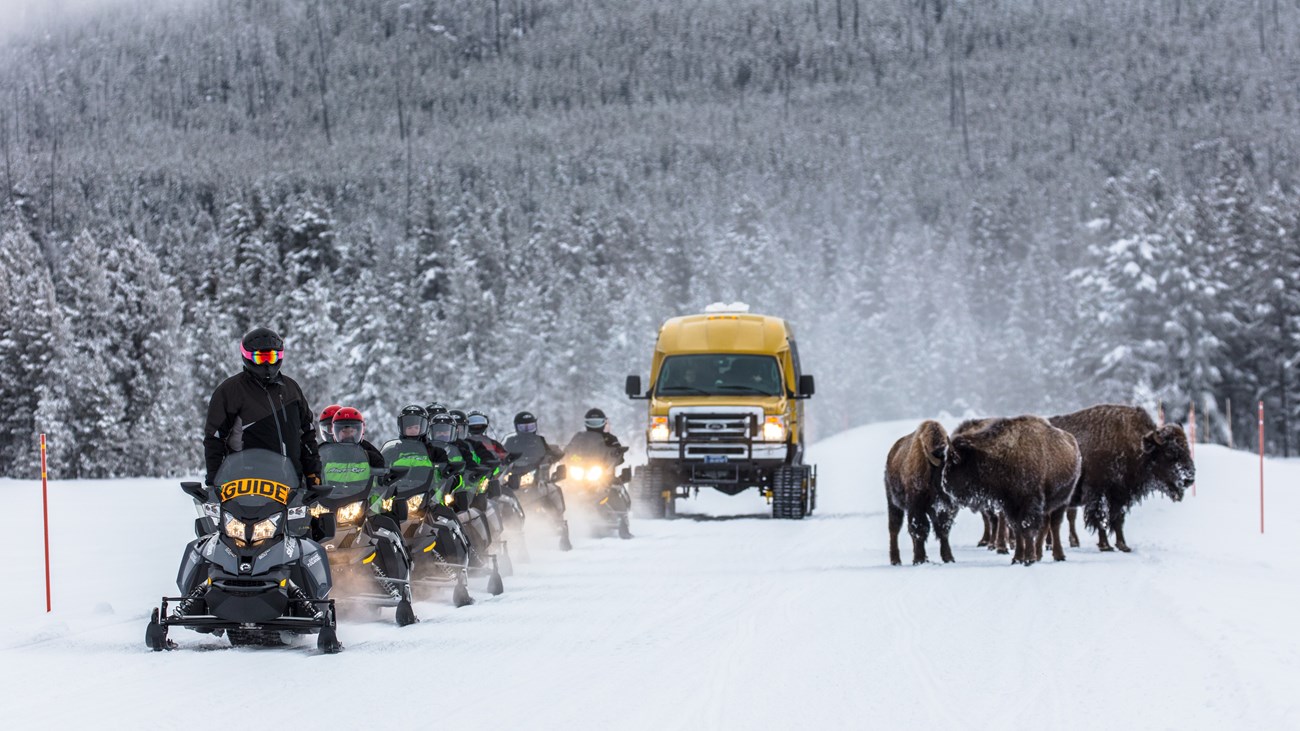
The National Park Service (NPS) mission is a dual mandate: preserve Yellowstone’s resources and make the park available and accessible for enjoyment and appreciation. The ways in which visitors access Yellowstone in winter can affect the park’s plants, animals, and wild character in ways more profound—and potentially more damaging–than at other times of the year. To meet its mission, the NPS has worked carefully to develop a long-term plan for winter use in Yellowstone that both protects the park’s resources and provides outstanding opportunities “for the benefit and enjoyment of the people.” Our GoalsFor years, the NPS managed the park in winter with interim management plans in the face of repeated courtroom challenges over snowmobiles and other winter operations. The final rule, published in October 2013, concluded more than 15 years of planning efforts and litigation, addressed concerns raised by the public (overcrowding, impacts on natural resources, noise and air pollution, availability of facilities/services, snowmobile restrictions, importance of winter visitation to the economy, wildlife using groomed roads, displacement of wildlife, and health and human safety), and established long-term management of winter use in Yellowstone. We work to provide a high-quality, safe, and educational winter experience.We work to provide for visitor and employee health and safety.We will protect wilderness character and values.We will preserve pristine air quality.We will preserve natural soundscapes.We will mitigate impacts to wildlife.We will coordinate with partners and gateway communities.
Winter Use Management in YellowstoneNPS Regulation 36 CFR 2.18 prohibits snowmobile use in national parks when there is no specific rule authorizing their use. This is known as the “closed unless open rule” — without a specific rule, oversnow vehicles would be prohibited from entering Yellowstone. The final Rule authorizing OSV use in Yellowstone was published in the Federal Register on Oct. 23, 2013, and was based upon the environmental analyses contained within the 2012-2013 Supplemental Environmental Impact Statement (SEIS) and Record of Decision. The final Rule provides mechanisms to make the park cleaner and quieter than previously authorized; provides greater flexibility for OSV commercial tour operators; rewards new oversnow technologies; and allows for increases in public visitation.
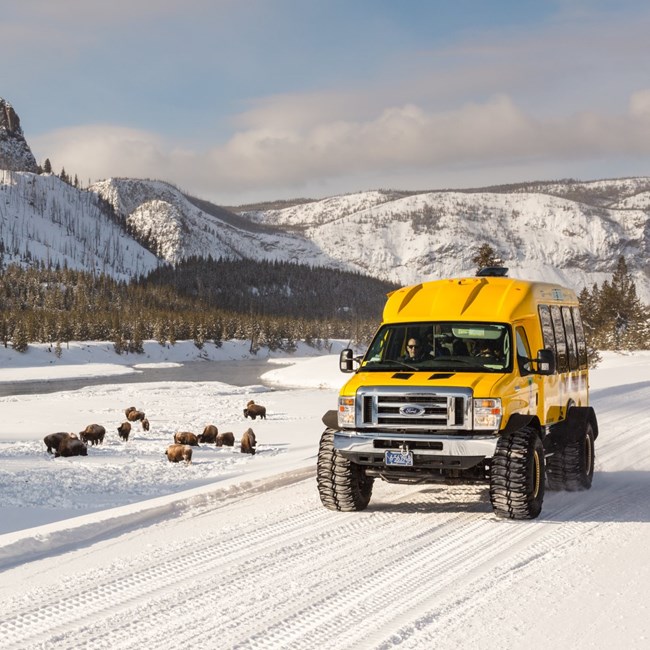
Adaptive Management ProgramThe final Rule in 2013 authorized an adaptive management program to inform and improve winter use management. Adaptive management is a three-step process: management, monitoring, and evaluation, which improve resource protection by blending science and public engagement. It enables natural resource managers to acknowledge uncertainties in the management of natural systems and respond to changing conditions while working with the public and interested stakeholders. Collaborative adaptive management, the approach Yellowstone is taking, emphasizes joint learning and an active partnership between managers, scientists, and other stakeholders, including the public.
To meet these objectives, the NPS collaborated with the public and other partners to develop a long-term, sustainable adaptive management plan for winter use in Yellowstone National Park. This plan outlined a process for public engagement and for prioritizing indicators to address scientific uncertainty and monitor resources of interest. NPS staff released the final adaptive management plan for winter use to the public in December 2016. Public input was included through participation in the Adaptive Management Team and the Adaptive Management Working Group. Meetings were also held throughout the region and were available remotely via webinar. Adaptive Management TeamThe winter use Adaptive Management Team is the broader public engagement body that encompasses all working groups and will provide feedback on the overall implementation of the Adaptive Management Program, including Adaptive Management Plan drafts. The Team focuses on the Adaptive Management Program in its entirety, and meets regularly to coordinate across impact topics, and to provide feedback to the NPS on Adaptive Management Program operations. The team also discusses the results of monitoring, how those results are related to the impacts that were described in the final Plan/SEIS, and, if warranted, discuss potential, adaptive changes that may be considered by the NPS. The team is composed of the Adaptive Management Program Coordinator, all working group leads, working group participants and other interested parties. Adaptive Management Program Working GroupsThe NPS is asking for feedback from working groups, made up of interested stakeholders and citizens, to develop a long-term and sustainable winter use Adaptive Management Plan (AMP), which will guide the park's future data collection on the impacts of winter use. Working groups are sub-groups of the larger adaptive management team, which meets to discuss ideas across topics and provide feedback on the overall AMP process. The Wildlife Working Group made recommendations to the NPS on the design of an updated monitoring strategy that measured and evaluated the impacts of winter use on the park's wildlife species, including bison, trumpeter swans, elk, lynx, wolverines, gray wolves, and bald eagles to ensure winter wildlife ecology was not disrupted going forward. This group also provided feedback to the NPS on current and future results of wildlife monitoring and research, and on adaptive management actions that may be implemented in the future as part of the new Adaptive Management Plan. Because wildlife evaluations did not substantially change over a decade, the wildlife monitoring effort was suspended in winter 2021-2022. The Soundscape and Air Quality Working Group make recommendations to the NPS on the design of an updated monitoring strategy that measures and evaluates the impacts of oversnow vehicle use on the park's natural soundscape and on the park's air quality to ensure a cleaner and quieter park, and compliance with the new winter use sound and air emissions requirements. The Human Dimensions Working Group make recommendations to the NPS on the design of an updated monitoring strategy that 1) measures and evaluates the impacts of winter use on the visitor experience, and other relevant publics, and 2) assesses changes in winter visitation under the new winter use plan and how such changes impact park resources. The Operations and Technology Working Group make recommendations to the NPS on the design of an updated monitoring strategy that measures and evaluates how winter use operations, under the transportation event concept, and oversnow vehicle technologies can be improved or modified to create a cleaner and quieter park experience, to facilitate cleaner-running vehicles and to generally reduce impacts to park resources. The Non-Commercially Guided Snowmobile Access Program permits people to snowmobile in Yellowstone without the presence of a commercial guide. Up to four non-commercially guided groups are allowed to enter the park daily: one group at each oversnow entrance. 
Questions & AnswersRecent studies on winter use indicate park resources are in very good condition. Research shows that snowmobiles and snowcoaches contribute similarly to the impacts of winter use. The perception that snowmobiles contribute to the vast majority of observed effects, and that those effects would greatly diminish by limiting travel to snowcoaches only, is not supported. When managed, both modes of transportation provide opportunities for visitors to enjoy the park. Each can offer different experiences for visitors, just as cross-country skiing, snowshoeing, and walking offer different opportunities for visitors to enjoy the park in the winter. WildlifeThe impact of oversnow vehicles (OSV) on wildlife is a key issue in winter use policies. OSV's are required to stay on groomed roads, but the roads are often situated where wildlife may concentrate in winter. Research indicates that disturbance by winter visitors is not a primary influence on the distribution, movements, or population size and composition of bison, trumpeter swans, elk, coyotes, and bald eagles. Air qualityWinter air quality in Yellowstone depends primarily on proximity to roads, parking areas, employee housing, and visitor lodging. Although visitation is far lower in the winter than in the summer, OSV's produce more emissions. Prolonged exposure to air pollutants such as carbon monoxide (CO), fine particulate matter (PM <2.5 micrometers), and hydrocarbons can pose health risks. SoundscapesNoise levels have also fallen somewhat with the conversion to BAT snowmobiles, mandatory commercial guiding, and limited numbers of snowmobiles. Although snowmobiles and snowcoaches are commonly heard during certain periods of the day, their noise is absent during other time s— even in developed areas like Old Faithful and along busy corridors like the West Entrance Road. IncidentsWith guiding has come a 50% reduction of law enforcement incidents, even when accounting for the drop in visitation. Arrests have virtually disappeared. Calls for medical assistance are the only statistic that has increased since the conversion to mandatory guiding. More Information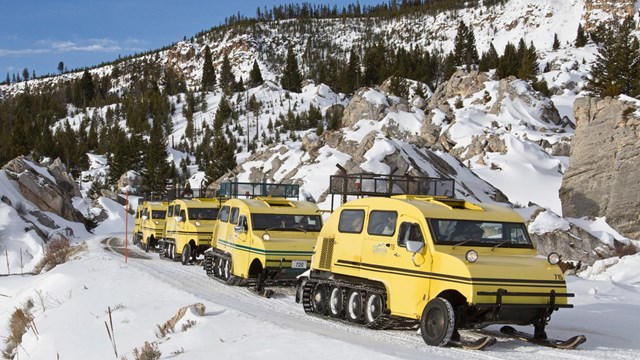
History of the Debate
Winter use planning is one of the most contentious issues for park managers and visitors with the debate spanning more than 80 years. 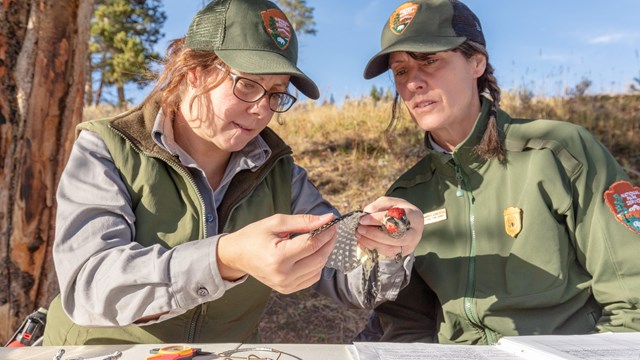
Science Publications & Reports
View science publications and reports created by Yellowstone's Center for Resources on a variety of park topics. 
Explore in Winter
Ready to brave the cold? Check out this information for planning a winter visit. 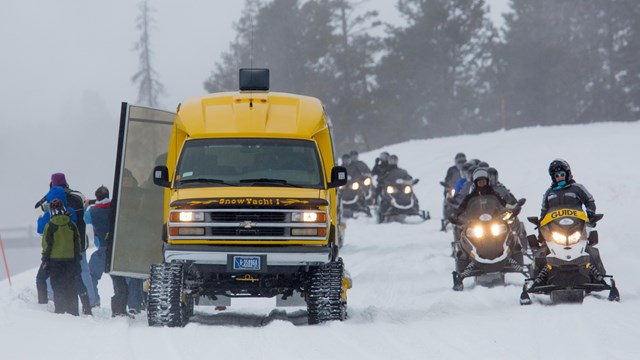
Ride a Snowmobile or Snowcoach
Take a guided tour of wintry Yellowstone. 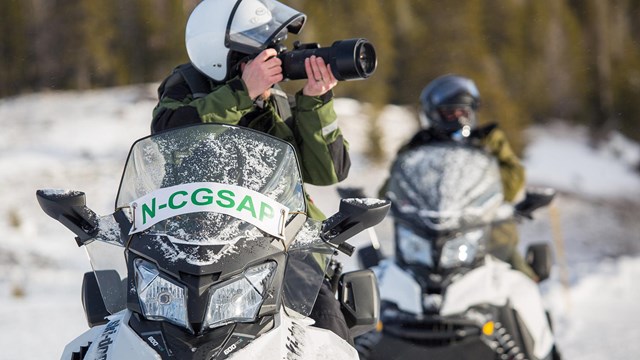
Snowmobile Access Program
Learn about our non-commercially guided snowmobile program. 
Winter Ecology
Winter in Yellowstone is a place of magic and vulnerability. Learn how wildlife endures the extremes of cold and the absence of food. 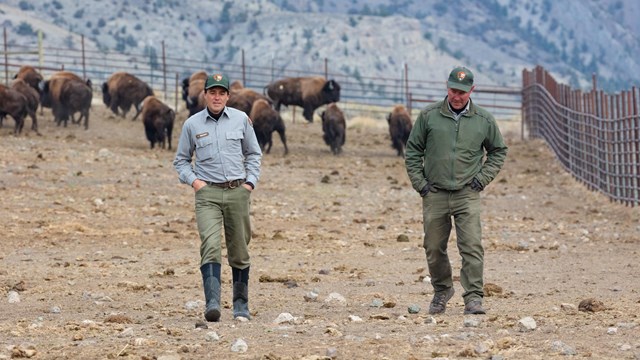
Management
Learn about the current natural and cultural resource issues that Yellowstone is managing for this and future generations. Winter Use Management NewsShowing results 1-3 of 3
|
Last updated: April 18, 2025

